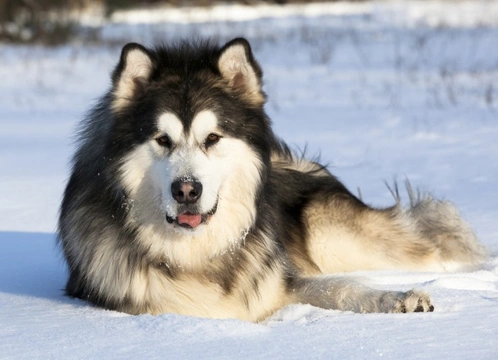
Training the Alaskan malamute successfully
The Alaskan malamute is one of several sled dog breeds, a grouping that also includes the more commonly seen Siberian husky, a breed that is often confused with the malamute although there are significant differences between the two! The malamute is a dog from the spitz grouping, a catch-all designation that tends to return a range of common appearance and temperament traits in dogs within the group, such as a thick, double layered coat, curled tail, and small pointed ears.
Dogs from within the spitz grouping also tend to be very cold-hardy, highly energetic, outgoing and friendly, as well as having a fairly strong prey drive.
These core traits are all factors that should be considered when it comes to finding the right approach to training for dogs of the spitz type, as by developing a deeper understanding of the traits of the spitz dog and the breeds within it, it is possible to tailor their training and ongoing management accordingly to fit the dog.
In this article, we will look at some of the core traits of the Alaskan malamute dog breed, and how to work with these traits in order to train dogs of the breed successfully and effectively. Read on to learn more.
Alaskan malamute personality
The Alaskan malamute is a large, strong dog that is very active and inquisitive, finding stimulus all around them and investigating accordingly! They are intelligent and switched on, which means that they can be very responsive to training and learning new skills, but they also tend to have a fairly short attention span, and will soon give up and get bored if something more exciting catches their attention!
They also have a strong prey drive, which can make recall challenging, and means that they may be apt to take off after smaller animals when out and about. They can be hard to keep contained, as some dogs of the breed have a tendency to jump out over fences and go roaming, and so care should be taken to ensure that this does not happen to you!
Energy levels
The Alaskan malamute has very high energy levels, and as well as being able to achieve a high running speed, they are also built for endurance, and are incredibly difficult to tire out successfully!
It is important to make sure that your dog receives enough exercise and returns from their walks tired and satisfied, as failing this, they can have a tendency to become unruly and so, harder to train. Walking the dog and allowing them to work off their excess energy levels before you begin a training session is important, in order to place the dog in the right frame of mind to be ready to work.
Training requirements
The Alaskan malamute should be able to achieve a good understanding and execution of all of the basic training commands such as sit, stay, leave it, lie down, and “no.” Training the dog for good recall is also vital, and this is often one of the most challenging elements of training the Malamute, particularly in open space and off the lead.
The malamute’s trainer should be alert, experienced and switched on, with a clear plan in place for each training session, and a good idea of both how to execute a successful training session and problem-solve any issues that come up as they go along.
Malamutes need an experienced, adaptive trainer, and if you are a first time dog owner or not overly familiar with the breed or dogs from the spitz grouping, you should consider taking your dog along to training classes, or enlisting the help of a professional dog trainer.
Approach to training
Positive reinforcement training is the most effective approach to employ for the malamute, and training sessions should be kept short and varied, introducing a range of new commands in each session while also working on established skills. As mentioned, walking and tiring the dog out prior to starting a session is highly recommended, as a dog that is full of beans will be much harder to manage!
Training should take place within a fenced area so that the dog can be contained, and early training should be performed on an extending lead until the limits of the dog’s recall ability have been established. Spending plenty of time working on recall with a reward offered every time for successful compliance will not only help with recall itself, but also keep the dog thinking and working for a reward, as well as continually looking to the trainer for direction.
Higher-level training of the Alaskan malamute should take place with progressive amounts of diversions and external stimulus in place, in order to work on the dog’s responsiveness and reliability at complying with commands under all sorts of different situations.
The malamute should also begin socialisation with other dogs from an early age, in order to ensure that they are reliable and friendly when meeting strangers.



